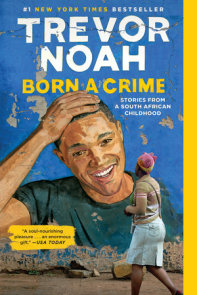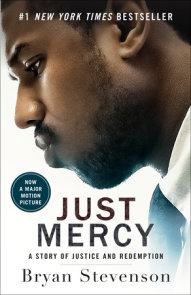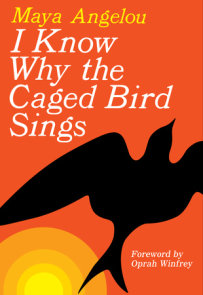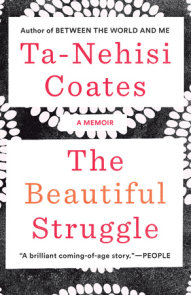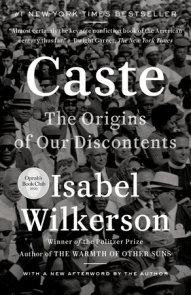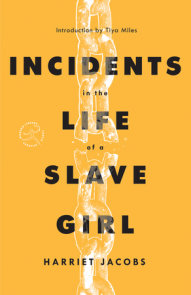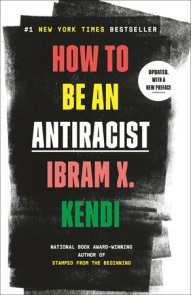TEACHING GUIDE
NOTE TO TEACHERS
Please click on the PDF link at the bottom of this page to download the Teacher’s Guide.
ABOUT THE BOOK
In a profound work that pivots from the most pressing questions about American history and ideals to the most intimate concerns of an African American father for his son, Ta-Nehisi Coates offers a powerful new framework for understanding our nation’s painful racial history and our current civil rights crisis. Americans have built an entire society on the idea of “race,” a false construct whose ramifications damage us, but fall most heavily on the bodies of black women and men—bodies exploited through slavery and segregation, and, today, threatened, locked up, and murdered out of all proportion to their number in the population. What is it like to inhabit a black body and find a way to live within it? And how can we all honestly reckon with this fraught history and free ourselves from its burden?
Between the World and Me is Ta-Nehisi Coates’s attempt to answer these questions, in the form of a letter to his adolescent son. Coates shares with his son—and readers—the story of his awakening to the truth about his place in American culture through a series of revelatory experiences, from Howard University to Civil War battlefields, from the South Side of Chicago to Paris, from his childhood home to the living rooms of mothers whose children’s lives were taken far too soon, as American plunder. Beautifully woven from personal narrative, reimagined history, and fresh, emotionally charged reportage, Between the World and Me clearly illuminates the past, bracingly confronts our present, and offers a transcendent vision for a way forward.
ABOUT THE AUTHOR
Ta-Nehisi Coates is a national correspondent for The Atlantic. A MacArthur “Genius Grant” Fellow, Coates has received the National Magazine Award, the Hillman Prize for Opinion and Analysis Journalism, and the George Polk Award for his Atlantic cover story “The Case for Reparations.” He lives in New York with his wife and son. Between the World and Me won the 2015 National Book Award for Nonfiction.
NOTE TO THE TEACHER
Touching on a range of topics, Coates’s letter to his adolescent son is a deeply ruminative and moving meditation. The impetus for the book is Coates’s attempt to situate himself within our current fraught racial climate, while grappling with our nation’s history of slavery. As the book progresses, he offers philosophical investigations into systems of slavery, police brutality, what it means to parent a child, and other topics that are of critical import for understanding identity in twenty-first-century America. However, there are ultimately no clear answers, making this text an excellent resource for discussion, reflection, and re-reading.
Supporting the national Common Core State Standards (CCSS) in Reading Informational Texts for high school curriculums, Between the World and Me is an appropriate selection for grades 11 and 12 in Language Arts or US History classes. At the college level, the book is appropriate for Composition and Literature classes, Race Studies, Gender Studies, and is also ideal for first-year/common reading programs.
In the following “Examining Content Using Common Core State Standards” section of this guide, the prompts provide for a critical analysis of Between the World and Me using the CCSS for Informational Text for grades 11 and 12 and are organized according to the standards they primarily support. In addition, at the end of each standard and the corresponding prompts, a classroom activity is provided that will further enhance analysis of the text.
For a complete listing of the Standards, go to: www.corestandards.org/the-standards.
PRE-READING ACTIVITIES
Reading Between the World and Me will be a richer and more meaningful experience for students if they first have had opportunities to understand that individual experiences determine one’s perception of race and race relations in the US today. The personal exploration and reflection the book invites requires that teachers and students first be aware of the historical context of race, and the political, economic, and cultural outcomes that have been produced by its role and influence in American society since the nation’s founding.
Talking about and reflecting on race and racism is difficult. However, a quick glance at any set of headlines reveals what happens when we fail to acknowledge difference and do not attempt to reach some type of cross-cultural understanding. Between the World and Me is situated in the middle of this discomfort, as Coates is a black man relating his experiences of racism and police brutality, among other contentious topics. Thus, it makes sense to prepare readers to open themselves up to being able to truly hear and understand Coates’s ideas, and to be ready to share and examine their own personal reactions to the book.
If people feel uncomfortable discussing race, they shut down, thus eliminating opportunities for growth and communication. Therefore, it is appropriate to have an initial conversation in which guidelines are established to ensure participants’ comfort and safety, and to create an inviting space for reading the text. Taking the time to have these discussions up front with students encourages them to move beyond stereotypes and self-censorship, and to be able to grapple with a more nuanced understanding of what it means to live in our current world. Although the discussion may initially prove uncomfortable, setting mutually agreed upon parameters first will go a long way toward setting a foundation that will encourage empathy and deeper understanding. It might also be helpful to allow for time for thoughtful reflection and processing throughout the reading of the book; this may also help to ease any discomfort that arises. For example, allow students to spend some time journaling before transitioning into small group discussions that encourage honest discourse. This, too, helps establish an environment where listening to and respecting different viewpoints is valued.
Additionally, reading some of Coates’s columns for The Atlantic on the magazine’s website introduces readers to his work and positions prior to reading the book. See the Resources section of this guide for additional ideas for pre-reading work.
EXAMINING CONTENT USING COMMON CORE STATE STANDARDS
ELA STANDARDS: READING INFORMATION TEXT: GRADES 11 & 12
KEY IDEAS AND DETAILS
CCSS.ELA-LITERACY.RI.11-12.1 Cite strong and thorough textual evidence to support analysis of what the text says explicitly as well as inferences drawn from the text, including determining where the text leaves matters uncertain.
The Body: What does Coates say about the precarious nature of his specifically African American body? What dangers does he cite that threaten the safety of his body? Examine the specific instances in which Coates describes his body, the violence enacted upon it, and his attempts to preserve his body and the bodies of loved ones. What explicit ideas about the perceived value of black life do these examples support?
The Dream: What, exactly, is “the Dream” as Coates describes it? Who is able to experience the Dream? What prevents Coates and his loved ones from realizing that same Dream? How does Coates’s version of the Dream differ from other, idealized versions of the Dream favored by popular media, literature, and other outlets? Why might Coates’s aversion to the Dream as it is traditionally conceived be difficult for Americans to accept?
Education: Coates repeatedly finds himself at odds with the American system of formal education. “I was made for the library, not the classroom,” he writes (48). Despite his discomfort with traditional education, however, he expresses a nearly insatiable desire to learn. What complications and questions do his literacy experiences raise, particularly for a young black man? Note: For a deeper exploration of the issues surrounding race and education, consult the ACLU’s School to Prison Pipeline website.
Prince Jones: Examine Coates’s description of Prince Jones as a “vessel that held his family’s hopes and dreams” (81–82). Evaluate how this description underscores the notion that “Black people love their children with a kind of obsession” (82).
CLASSROOM ACTIVITY
Create a visual representation that compares and contrasts Coates’s reality to “The Dream.” Then, in a written exploration, trace the significance of the differences between dream and reality, and explain how the visual representation helps articulate and extend Coates’s main points.
CCSS.ELA-LITERACY.RI.11-12.2 Determine two or more central ideas of a text and analyze their development over the course of the text, including how they interact and build on one another to provide a complex analysis; provide an objective summary of the text.
Coates explores several broad themes, including race, racism, and systemic oppression; fear; father-son relationships; the search for identity; education; and justice, among others. Trace the development of one or more of these themes throughout the text. How does Coates develop this theme? What events or details are most central to his development of this theme?
The title of the book is taken from Richard Wright’s poem of the same name. The poem and the book make a fitting text pairing. Read Wright’s poem (available here: www.tiny.cc/qaud8x), and then analyze the connections between the two texts, and the patterns they may share.
Coates writes the book to his adolescent son, Samori. Throughout, he describes moments of paralyzing fear, often accompanied by imminent or potential threats of violence. In the first section of the book, Coates reacts to the murder of Michael Brown, and how to address it with Samori, writing, “I did not tell you that it would be okay, because I never believed it would be okay” (11). How does Coates’s reaction here help us think about the relationship between fear and violence? How is the perceived relationship between fear and violence further developed after his friend, Prince Jones, is killed? Readers might also want to consider Coates’s admiration of Malcolm X, and how this admiration adds another layer of complexity to the fraught relationship between fear and violence.
CLASSROOM ACTIVITY
“Literacy for Freedom” is a belief deeply rooted in African American liberation tradition. Essentially, it is necessary for African Americans to be able to read and write, if they are ever to achieve freedom and equality. In many respects, Between the World and Me can be read as a literacy narrative. Examine Coates’s description of the types of literacy he pursued, and the types of literacy promoted by his father and other family members. Create a timeline of Coates’s significant experiences of reading and writing, including people who influenced him in his explorations of literature and literacy. Conduct a Structured Academic Conversation (explained here: www.tiny.cc/5bud8x) to determine which experience was the most liberating for Coates, and the overall impact of that key experience.
CRAFT AND STRUCTURE
CCSS.ELA-LITERACY.RI.11-12.4 Determine the meaning of words and phrases as they are used in a text, including figurative, connotative, and technical meanings; analyze how an author uses and refines the meaning of a key term or terms over the course of a text (e.g., how Madison defines “faction” in Federalist No. 10).
“I was admitted to Howard University, but formed and shaped by The Mecca,” (40) Coates explains. When Coates arrives at Howard in his narrative, his tone changes. At this “crossroads of the black diaspora,” he is enveloped in a multilayered history. Analyze Coates’s description of Howard’s Yard (40–42), thinking in particular about how his word choices help to reflect the magnitude of his educational and racial awakening, as well as to distinguish between “the Mecca” and “Howard University.” How did each place contribute to the growth of Coates’s self-awareness and his path toward maturity? What is the relationship between institutions and the culture that institutions create, as well as the culture that is created by students or individuals within these institutions?
When Coates travels to Paris, he has another learning experience that challenges his fears and assumptions. After an outing with a friend, he describes a particular type of loneliness that deeply disturbs him and leads him to realize that “Some of us make it out. But the game is played with loaded dice” (124). How does this statement characterize Coates’s conflicting emotions and concerns about the legacy he hopes to share with his son?
CCSS.ELA-LITERACY.RI.11-12.5 Analyze and evaluate the effectiveness of the structure an author uses in his or her exposition or argument, including whether the structure makes points clear, convincing, and engaging.
Coates structures his book as a letter to his son. Does the epistolary format make his overall argument more or less effective? Is the letter the best format for conveying such a powerful argument? If no, then what form might be more effective? If yes, name the aspects of the format that are most successful and that best support the argument in favor of the epistolary form.
CLASSROOM ACTIVITY
James Baldwin also wrote a letter (to his nephew, not his son) that discussed issues including race, equality, and love (available here: www.tiny.cc/ceud8x). Many consider this letter to be among Baldwin’s best writing; and Baldwin is regarded by many as one of America’s most important writers. Analyze and evaluate Baldwin’s main ideas in his letter, then compare his arguments with those of Coates. How are the letters similar in their messages and themes, and where do they diverge? Consider content, style, and overall message in your comparison. What connections can you draw between Coates and Baldwin?
CCSS.ELA-LITERACY.RI.11-12.6 Determine an author’s point of view or purpose in a text in which the rhetoric is particularly effective, analyzing how style and content contribute to the power, persuasiveness or beauty of the text.
Between the World and Me can be divided into three sections, each focused on a different era in Coates’s life: his early life, before attending Howard University; his time at Howard; and his life after Howard. What is Coates’s primary claim throughout the book? What is his key purpose in writing this book? As he narrates his experiences, what techniques (rhetorical, literary, etc.) does Coates use to make his ideas coherent and to organize his information?
“I wanted you to claim the whole world as it is . . . The Struggle is in your name, Samori” (68). Evaluate the power of Coates’s direct addressing of his son, and of his refusal to portray the world to his child in idealized terms. What is the value of “the Struggle,” even if the result is death? How, too, does Coates encourage readers to consider the complexity of parenting, particularly for black fathers and black sons?
Coates writes powerfully about the legacy of slavery and the haziness of memory, particularly as that haziness allows for the denial and erasure of the brutal institution’s role in American history. Interpret Coates’s meaning when he writes, “In America, it is traditional to destroy the black body—it is heritage” (103). Then, compare that statement to this one: “There is no them without you, and without the right to break you they must necessarily fall from the mountain, lose their divinity, and tumble out of the Dream” (105). Why is the burden of truth so difficult to bear? Why must the truth be faced, regardless of the resistance to that truth?
CLASSROOM ACTIVITY
Explore the resources available from the National Humanities Center (www.tiny.cc/zjud8x) on enslaved Africans in the United States. Then:
a. Find images that correspond to Coates’s description of an enslaved woman (69–70). Combine the visual and written texts in a way that illustrates his assertion that “slavery is not an indefinable mass of flesh” (69). Or,
b. Create a dialogue poem between Coates and one of the images that helps to illustrate and support his assertion.
RESEARCH TO PRESENT AND BUILD KNOWLEDGE
CCSS.ELA-LITERACY.W.11-12.8 Gather relevant information from multiple authoritative print and digital sources, using advanced searches effectively; assess the strengths and limitations of each source in terms of the task, purpose, and audience; integrate information into the text selectively to maintain the flow of ideas, avoiding plagiarism and overreliance on any one source and following a standard format for citation.
Coates reminds the reader of the seemingly unrelenting threat of violence perpetuated on black bodies throughout American history, from slavery, to redlining, to police brutality. He names numerous black men killed at the hands of police, including his friend Prince Jones. Select one or more of the men mentioned in the book and conduct research about his death, drawing on a variety of resources to ensure a balance of viewpoints. Then, decide how your research should be presented and determine an appropriate audience. Finally, your research should make clear how it can be used to strengthen claims Coates makes and, most importantly, how it either supports or refutes Coates’s contention.
RESOURCES
“Let’s Talk! Discussing Race, Racism and Other Difficult Topics With Students” (www.tiny.cc/nizy9x): A Teaching Tolerance webinar with accompanying free materials including a self-evaluation and teaching strategies.
Ed Change (www.tiny.cc/gjzy9x): Resources for multicultural and social justice education.
Systemic Racism YouTube Video Playlist (www.tiny.cc/ikzy9x): This series of videos created by Race Forward features Jay Smooth, who explains the various systems that contribute to perpetuating racial inequality in the United States.
Moving the Race Conversation Forward (www.tiny.cc/ilzy9x): This video featuring Jay Smooth aims to explain the complications of discussing race without considering the various levels of racism (internalized, interpersonal, systemic/institutional, structural) that are interrelated and affect and influence one another.
Working Toward Whiteness: How America’s Immigrants Became White: The Strange Journey from Ellis Island to the Suburbs by David Roediger: This book helps situate Coates’s discussions of whiteness and “those Americans who believe that they are white” (6), providing a foundation for discussion of Coates’s ideas.
Richard Wright, “Between the World and Me” (www.tiny.cc/qaud8x)
OTHER WORKS OF INTEREST
The Thing Around Your Neck, Chimamanda Ngozi Adichie
The New Jim Crow: Mass Incarceration in the Age of Colorblindness, Michelle Alexander
The Fire Next Time, James Baldwin
“In Case of Emergency: Letter to my Nephew,” Joshua Bennett (a spoken-word poem, available
at www.tiny.cc/dlud8x)
Fire Shut Up in My Bones, Charles M. Blow
Invisible Man, Ralph Ellison
“Cuz He’s Black,” Javon Johnson (a spoken word poem, available at www.tiny.cc/tmud8x)
Citizen: An American Lyric, Claudia Rankine
Just Mercy: A Story of Justice and Redemption, Bryan Stevenson
Native Son, Richard Wright
ABOUT THIS GUIDE’S WRITER
DR. KIMBERLY N. PARKER teaches English at the Cambridge Rindge and Latin School in Cambridge, MA. She is the current president of the New England Association of Teachers of English and the former Secondary Representative at-Large for the National Council of Teachers of English. Dr. Parker holds a PhD in Curriculum and Instruction from the University of Illinois Urbana-Champaign.
×
Become a Member
Just for joining you’ll get personalized recommendations on your dashboard daily and features only for members.
Find Out More Join Now Sign In









